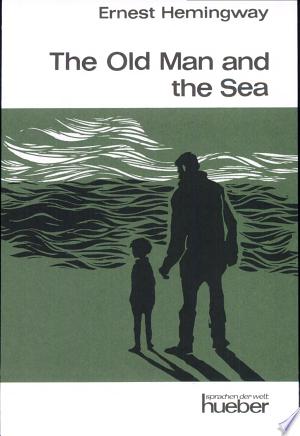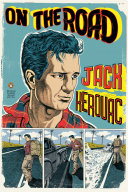
"Studs Lonigan" Summary
fiction | Published in 2001
Estimated read time: 7 min read
One Sentence Summary
A coming-of-age story that follows a young man from his rebellious teenage years to his eventual disillusionment with life in 1920s Chicago.
Table of Contents
Introduction
"Studs Lonigan" is a classic American novel written by James T. Farrell. Published in 1932, the book is set in the early 20th century and explores the life of its title character, Bill "Studs" Lonigan, as he navigates the challenges and temptations of growing up in a working-class Irish-American neighborhood in Chicago.
Through Studs' experiences, the novel delves into themes of identity, class, religion, and the destructive forces of alcohol and violence. With its gritty realism and unflinching portrayal of urban life, "Studs Lonigan" remains a powerful and timeless reflection on the human condition.
Brief Synopsis
Set in the years between 1916 and 1932 in the Irish-American neighborhood of South Side Chicago, "Studs Lonigan" follows the life of Bill Lonigan, commonly known as Studs. The novel is divided into three parts, each focusing on a different stage of Studs' life: adolescence, young adulthood, and middle age.
Part 1: The Young Manhood of Studs Lonigan
In Part 1, the story begins with Studs as a fourteen-year-old boy dealing with the pressures and expectations of his peers and family. Studs, along with his friends Danny and Weary Reilly, spends his time hanging out in the local pool halls and engaging in small acts of rebellion. Their actions, however, often lead to trouble, and Studs is faced with the consequences.
As Studs navigates the challenges of adolescence, he becomes increasingly aware of his Irish heritage and struggles with his desire to fit into the wider American society. He also experiences his first love interest, Catherine, and struggles with his unresolved feelings for her.
Part 2: The Young Adult Hood of Studs Lonigan
Part 2 finds Studs in his late teens and early twenties. Here, he is torn between his aspirations for a better life and the influence of his friends and surroundings, which keep pulling him into a life of drinking, violence, and aimlessness. Studs falls deeper into the traps of street life, and his dreams of education and success seem further out of reach.
Additionally, Studs finds himself grappling with questions of faith and religion, as he struggles with his guilt and a deep-rooted fear of damnation. Throughout this section, Studs' relationships with his family and friends become strained, and he starts to become disillusioned with the future.
Part 3: The Old Manhood of Studs Lonigan
In the final part of the novel, Studs faces the consequences of his choices and the passing of time. Now in his thirties, he is married but unhappy, living a life that falls well short of his earlier ambitions. The Great Depression and the death of his father exacerbate Studs' sense of disillusionment and desperation.
Haunted by regret and a failure to find purpose, Studs finally succumbs to the hardships of life, leading to a tragic end that reflects the destructive forces that have consumed him throughout the novel.
Main Characters
| Character | Description |
|---|---|
| Studs Lonigan | The protagonist of the novel, Studs is an Irish-American youth living in Chicago, struggling to find his place in the world. |
| Catherine | Studs' first love interest, Catherine represents Studs' desire for a better life outside of his neighborhood. |
| Danny Reilly | One of Studs' closest friends, Danny is a charismatic and reckless young man who often leads Studs into trouble. |
| Weary Reilly | Another friend of Studs, Weary is prone to violence and is known for his tough and rebellious nature. |
| Mary Lonigan | Studs' mother, Mary plays a central role in his life but is unable to protect him from the pitfalls of his environment. |
Main Events
Part 1: The Young Manhood of Studs Lonigan
- Studs struggles to balance his desire to fit in with his Irish heritage and his longing for acceptance from the wider American society.
- Studs experiences his first love interest with Catherine, but their relationship remains unresolved.
- Studs embraces rebellion and small acts of defiance with his friends Danny and Weary, leading to various consequences.
Part 2: The Young Adult Hood of Studs Lonigan
- Studs continues to drift further into a life of drinking, violence, and aimlessness.
- He grapples with questions of faith and guilt, struggling with his fear of damnation.
- Studs' relationships with his family and friends become strained as he grows increasingly disillusioned.
Part 3: The Old Manhood of Studs Lonigan
- Studs faces the consequences of his choices as he enters his thirties and reflects on the passing of time.
- He is married but unhappy, living a life far below his earlier ambitions.
- The Great Depression and the death of his father heighten Studs' sense of disillusionment and desperation.
Themes and Insights
- The Struggle for Identity: Studs' journey reflects the challenges faced by immigrants and second-generation Irish-Americans in America, as he grapples with his cultural heritage and his desire to assimilate.
- Class and Society: The novel explores the constraints of social class and the impact of poverty on individuals and communities. Studs' limited opportunities and the cycle of inequality are starkly portrayed.
- Religion and Guilt: Farrell delves into questions of faith and the burden of guilt. Studs' fear of damnation and his struggles with Catholicism add complexity to his character and underscore his inner conflicts.
- The Destructive Forces of Vice: Alcohol, violence, and aimlessness surround Studs, threatening to derail his life at every turn. Farrell highlights the consequences of these destructive forces on individuals and their communities.
- Disillusionment and Regret: Studs' story serves as a cautionary tale about the perils of unfulfilled dreams and the weight of regret. His journey reflects the pervasive sense of disillusionment during the early 20th century.
Reader's Takeaway
"Studs Lonigan" provides a raw and unvarnished look into the life of a young man caught between the aspirations of a better life and the harsh realities of his environment. Through Studs' experiences and struggles, readers are exposed to themes of identity, class, religion, and the consequences of personal choices. This gripping and powerful novel offers a poignant insight into the complexities of the human condition and serves as a reminder of the enduring impact of societal and personal challenges.
Conclusion
"Studs Lonigan" is not merely a coming-of-age story; it is a profound exploration of the human spirit in a world marked by poverty, violence, and limited opportunities. James T. Farrell's masterful storytelling, combined with his unflinching portrayal of life in early 20th-century Chicago, captures the essence of the American immigrant experience. This timeless and thought-provoking novel continues to resonate with readers, reminding us of the importance of understanding our past and the choices that shape our future.
Studs Lonigan FAQ
Who is the author of 'Studs Lonigan'?
When was 'Studs Lonigan' first published?
What genre does 'Studs Lonigan' belong to?
Is 'Studs Lonigan' based on a true story?
Are there any sequels or other books related to 'Studs Lonigan'?
Is 'Studs Lonigan' suitable for young readers?
Does 'Studs Lonigan' have any notable adaptations?
Is 'Studs Lonigan' a character-driven or plot-driven novel?
Is 'Studs Lonigan' a recommended read?




